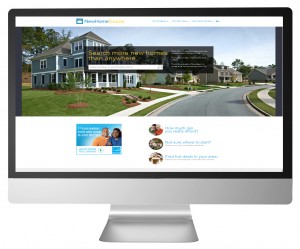 By Jamie Lintner, BDX Advertising Manager
By Jamie Lintner, BDX Advertising Manager
We’ve known for a while about the importance of running a BeBack Retargeting campaign to help convert home shoppers into home buyers. The numbers show time and time again that driving repeat traffic back to a site significantly increases both the on-site usage and the likelihood of a backend conversion. And this makes perfect sense. The more engaged a user becomes with a particular brand, the better understanding they have of the products/services being offered and the more apt they are to take action.
For example, it’s unlikely that a runner would buy the first pair of shoes he sees at Dick’s Sporting Goods. But just because he leaves the store without purchasing the shoes doesn’t mean you should abandon the prospect of a sale. He has showed strong intent to purchase shoes; he simply needs a little guidance and a little push to get him to the checkout counter. The same goes for the online space. Even if a person bounces from your site or shows little engagement, the fact that they arrived in the first place conveys intent to learn about your product.
What kind of a lift can you expect from driving return visits? On NewHomeSource, we see significant gains in both user engagement and conversion. On average, returning users showed a 25% increase in pages viewed, a 13% decrease in bounce rate, and a 60% jump in average visit duration over their “new user” counterparts.
The data shows a new shopper is exactly that, new. They come to the site wide-eyed with little idea on how to navigate the pages to find what they want. Returning visitors know what to expect from the site and have an idea on how to navigate. Because of this, they bounce less often, on average view another page and stay on the site almost twice as long. What’s most important is these users convert 30% more often, so those increased actions are actually translating into increased conversions.
Digging deeper, users who ended up on NewHomeSource.com for the first time through a display banner ad converted 2.6% of the time. Returning users who had shopped NewHomeSource previously and came back by clicking the SAME AD converted 6.5% of the time (a 150% increase). Obviously these metrics will vary from site to site due to the prevalence of the lead form, layout, number of pages to shop, etc. but the same principle applies across the board. And while display advertising is a main cog in driving repeat traffic, returning users can come from multiple sources (Pay Per Click, organic search, Google, social media, etc). Marketers should understand how all of the media channels work together to convert searches into purchases, and the best way to manage that is to consistently drive repeat visits.
Are you looking beyond cost per lead and leveraging various forms of online marketing to generate quality traffic? And secondly, are you fostering your existing traffic in ways that will lead them to return, either by creating a new customer experience or utilizing a retargeting program? Returning users generate much stronger interest and conversions on the backend, making it essential to prioritize getting as many people as possible to return to your site.
If you’d like more information about how builders are improving their web traffic through display advertising and retargeting campaigns contact us at info@thebdx.com.
 By BDX Guest Blogger, Carol Morgan, mRELEVANCE
By BDX Guest Blogger, Carol Morgan, mRELEVANCE
